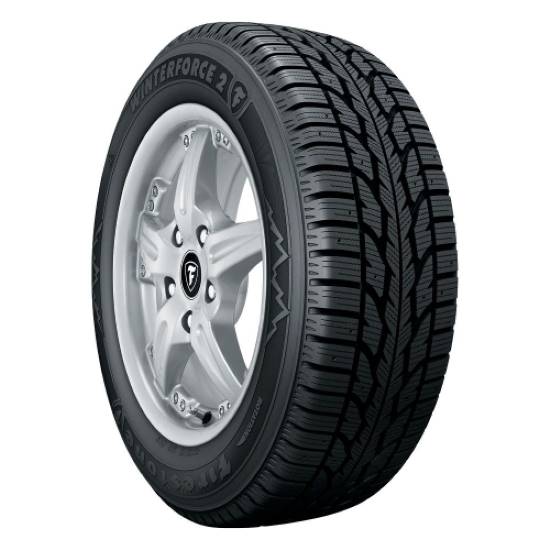The aggressive tread and off-road capabilities of all-terrain tires might have you thinking that they’d be suitable for winter purposes as well. After all, if they’re capable of providing traction in loose sand and gravel, and slogging their way through mud, how much different is that than sustaining traction through snow and slush?
There’s some logic to that line of thought, and the macro tread commonalities between some all-terrain tires and snow tires are apparent as well.


Close enough, right?
Thing is though, there’s much more to snow tires than initially meets the eye. If you didn’t notice straightaway, a second look at the above comparison images will show the Firestone Winterforce snow tire has an abundance of sipes (small cuts/grooves in the tread), which are entirely lacking on the all-terrain tire. Snow tire sipes are a fundamental and distinguishing aspect of snow tires, and contribute substantial traction advantages in winter conditions.
Key Differences Between A/T and Snow Tires
And perhaps the most meaningful difference between an all-terrain tire and a snow tire isn’t perceptible — the compounds, composition of the two types of tires may be fundamentally different.
What Makes Snow Tires Superior in Winter?
Snow tire compounds are uniquely designed to remain pliable in sub-freezing temperatures. The same cannot be said for most all-terrain tires. In fact, the construction of many all-terrain tires reflects the fact that they’re designed to be tough, durable and puncture resistant. That engineering priority does not mean flexibility in winter temperatures.
In addition to pliability in freezing temperatures, advanced snow tire compounds also have the capability of attracting/holding onto snow, which enhances traction. (If you’ve ever formed a snow ball you know that, well, snow sticks to snow…)
The Limitations of All-Terrain Tires in Snow
So generally speaking, due to the very different design priorities, most all-terrain tires cannot match the wintertime performance of a quality snow tire. It’s also true that many all-terrain tires will actually fall short of the on-road wintertime performance of all season tires designed for SUVs, CUVs, and light trucks.
Testing A/T Tires vs. All-Season and Snow Tires
- In a recent test involving the General Tire Grabber HTS60 (all season tire) and an all-terrain tire also from General, the Grabber HTS60 outperformed the all-terrain tire in snow acceleration, braking, and handling. The all season tire showed a significant advantage in snow braking especially. It stopped about 15′ shorter than the all-terrain tire in a stop from just 25 mph.
As much as we like the Grabber HTS60, it’s a measurable step down in performance from a SUV/CUV/light truck snow tire like the Michelin Latitude X-Ice Xi2. And so when it comes to practical, on-road wintertime traction, the gap between many all-terrain tires and quality snow tires is drastic.
The New Breed: A/T Tires with Severe Snow Ratings
Some modern all-terrain tires are attempting to close the wintertime performance gap. The Kumho Road Venture AT51 and Falken Wildpeak A/T3W, for example, meet the high wintertime traction requirement to be labeled with the symbol for severe snow use.

So if you do intend to run an all-terrain tire through four seasons, don’t assume “all-terrain” means winter capability, and definitely seek out one of the options with verifiable snow performance.


